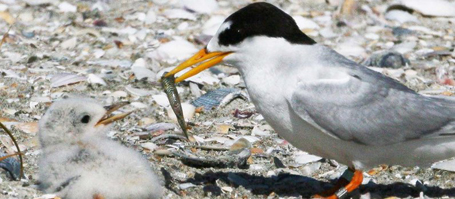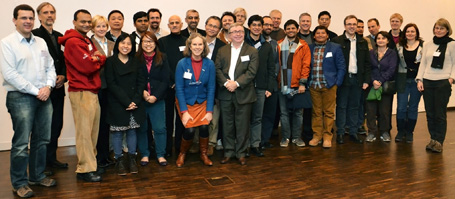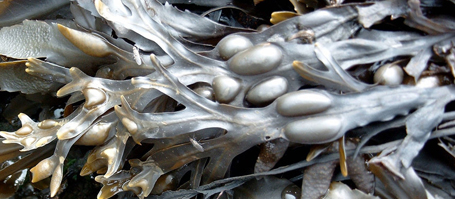There are more than 10,500 bird species worldwide. Around 275 of these are seabirds. With only eight known breeding pairs remaining, the New Zealand fairy tern Sternula nereis davisae is one of the rarest and most threatened birds. An adult New Zealand fairy tern is about the size of a human hand and weighs approximately 60 grams. Scientists are striving to understand more of the behavioral ecology of these critically endangered birds, to better enable their protection. Their foraging ecology plays a central role and has been as yet little assessed. Prof. Dr. Stefanie Ismar from GEOMAR Helmholtz Center for Ocean Research Kiel together with a team of New Zealand colleagues has assessed the feeding behavior, foraging grounds and prey sources of the New Zealand fairy tern. A first comprehensive overview of their work has been published in the current issue of Bird Conservation International.
Prof. Ismar and her colleague Karen Baird of the Royal Forest and Bird Protection Society Inc, New Zealand, conducted their work in the most important breeding area of the New Zealand fairy tern during the 2010-2011 breeding season October-March in Mangawhai Harbour, Northland, North Island. There they and their team observed the terns on their foraging searches. “Firstly, it was crucial for us to see where the birds get their prey, so we could subsequently analyze their food sources," says biologist Ismar.
Once the foraging grounds were identified, the researchers could more closely analyze the preferred prey: mostly gobies, and to a lesser extent, small flatfish. The study also uncovered shrimps as a potentially important food source. By means of physical and chemical analyses scientists then compared food sources to the feathers of the terns. As Stefanie Ismar explains: "We measured the nitrogen and carbon stable isotope composition of the birds‘ prey, and then compared it to the ratios of the same isotopes in bird tissue. Feathers are especially suited for this, as they could be gathered during bird banding operations by the Department of Conservation without causing additional disturbance to the birds," says Ismar. Thus, the researchers could determine the diet of the terns.
The analyses showed in what proportions the birds feed on which prey species. This provides important information to enable conservation management: "The breeding locations of the New Zealand fairy tern are already protected, and the same must be achieved for their foraging grounds. Mangrove-lined parts of the estuary were particularly rich in suitable prey and much frequented by fairy terns. Mangawhai Harbour is also a popular holiday destination. If its ecosystem is altered, the remaining breeding population of fairy terns may be in danger," says Ismar. „Fortunately, there is much public support for the birds‘ protection. Volunteers of the New Zealand Fairy Tern Trust and the Tern About Volunteers support the work by the Department of Conservation and Forest and Bird.“
Prof. Stefanie Ismar summarizes: "We have gained valuable new insight into the food sources of Sternula nereis davisae. We hope this may help to aid the bird’s protection. Additionally, our collaborative study has yielded indications of further food-web dependencies and interactions in a vulnerable ecosystem which may also benefit the protection of other species."
Original work:
Ismar, S. M. H., T. Trnski, T. Beauchamp, S. J. Bury, D. Wilson, R. Kannemeyer, M. Bellingham, K. Baird (2014): Foraging ecology and choice of feeding habitat in the New Zealand Fairy Tern Ster-nula nereis davisae, Bird Conservation International, http://dx.doi.org/10.1017/S0959270913000312
Contact:
Prof. Dr. Stefanie Ismar (GEOMAR, FB3-Experimental Ecology, Food Webs)
sismar@geomar.de
Jan Steffen (GEOMAR, Communication & Media)
jsteffen@geomar.de
…



